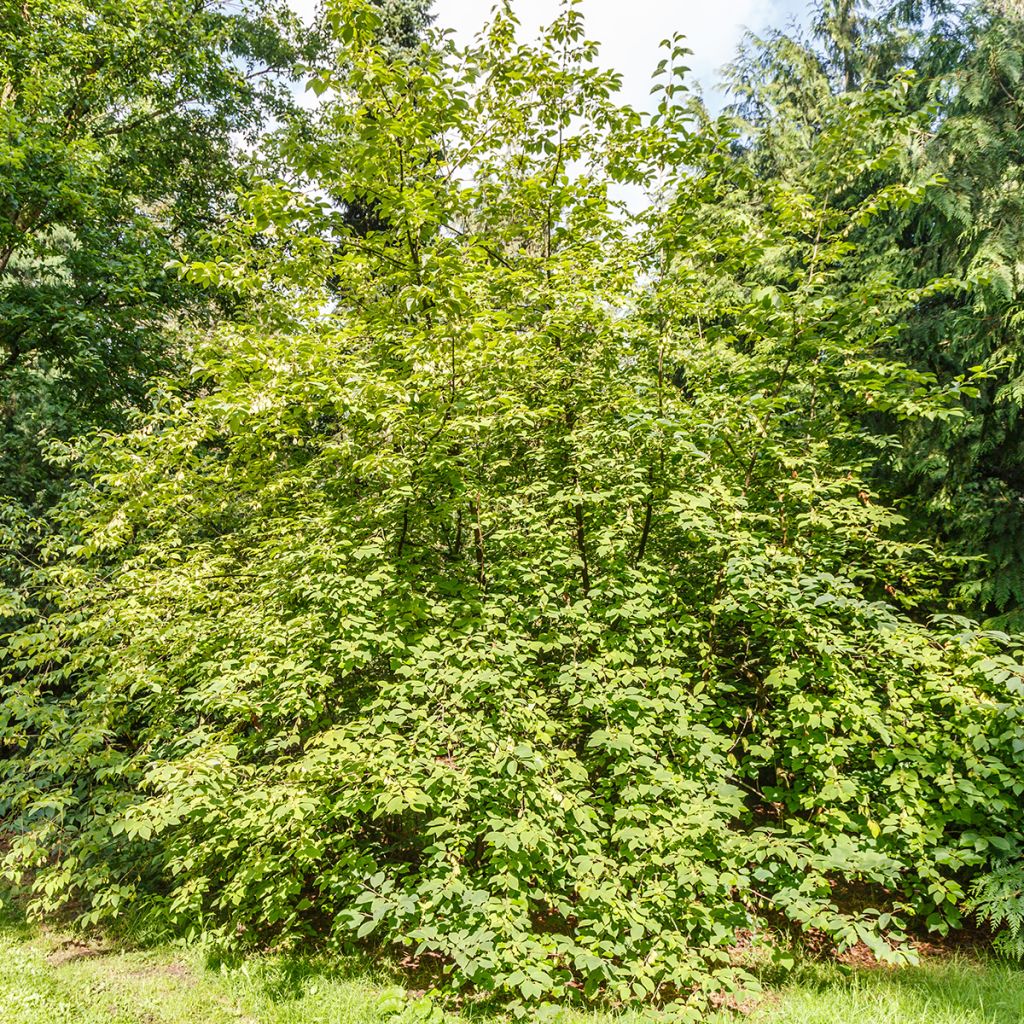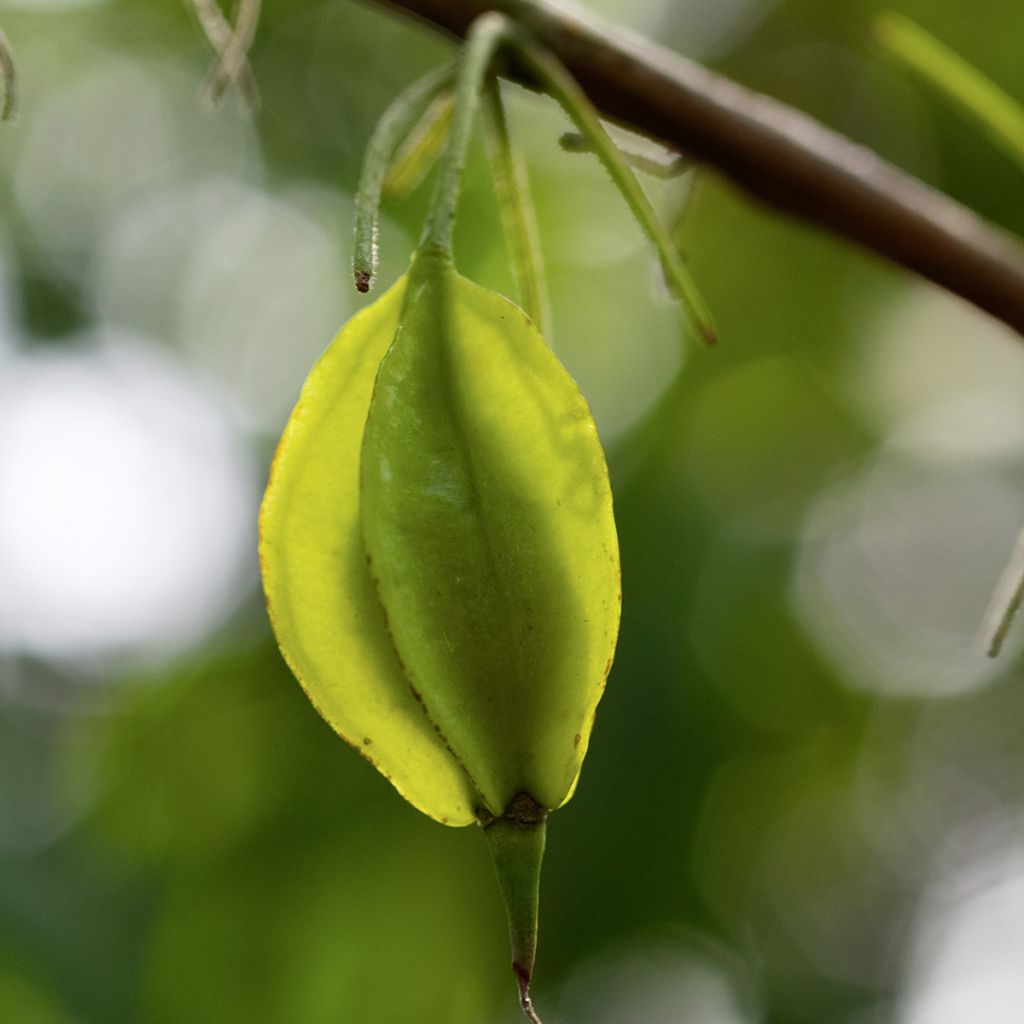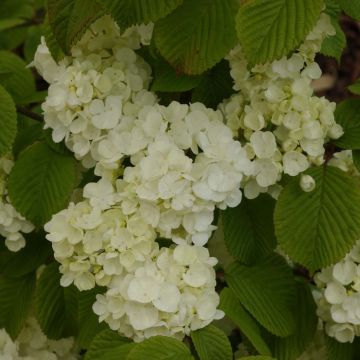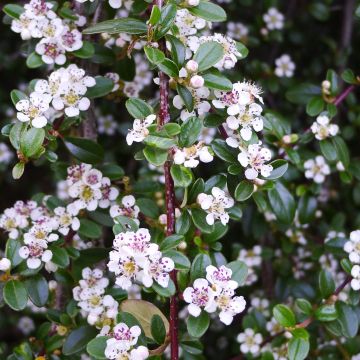

Halesia carolina var. monticola


Halesia carolina var. monticola


Halesia carolina var. monticola


Halesia carolina var. monticola
Halesia carolina var. monticola
Halesia carolina var. monticola
Special offer!
Receive a €20 voucher for any order over €90 (excluding delivery costs, credit notes, and plastic-free options)!
1- Add your favorite plants to your cart.
2- Once you have reached €90, confirm your order (you can even choose the delivery date!).
3- As soon as your order is shipped, you will receive an email containing your voucher code, valid for 3 months (90 days).
Your voucher is unique and can only be used once, for any order with a minimum value of €20, excluding delivery costs.
Can be combined with other current offers, non-divisible and non-refundable.
Why not try an alternative variety in stock?
View all →This plant carries a 24 months recovery warranty
More information
We guarantee the quality of our plants for a full growing cycle, and will replace at our expense any plant that fails to recover under normal climatic and planting conditions.
Would this plant suit my garden?
Set up your Plantfit profile →
Description
Halesia carolina var. monticola, also known as Halesia monticola, is a deciduous small tree commonly called the Carolina Silverbell or Snowdrop Tree for its white, drooping bell-shaped flowers. It also offers beautiful golden autumn foliage and grey bark that peels over time. Its habit, initially rounded, becomes an irregular parasol shape over time. Showcase it by pruning it close to the ground to form multiple trunks, plant it in a grove, or in the centre of a shrub border. This tree thrives only in acidic, humus-bearing soils that remain moist in summer.
Halesia carolina var. monticola belongs to the Styracaceae family, a cousin of Styrax. This botanical species is native to forests in the southern United States, particularly the Appalachian region, which earned it the name of Mountain Silverbell. In the wild, this tree grows on slopes, in open forests, and along forest edges, alongside the Tulip Tree (Liriodendron tulipifera) and the Eastern Hemlock (Tsuga canadensis). It prefers deep, humus-bearing, neutral to acidic soils that are consistently moist to wet, yet well-drained. Closely related to Halesia carolina, this species distinguishes itself by its larger size and flowers.
The Halesia monticola naturally forms multiple trunks supporting a flexible, spreading canopy that is wider than it is tall. Pruning can be done to maintain one or two main trunks, although its irregular habit does not lend itself well to pruning. It has a rather slow growth rate, reaching an average height of 5m and a spread of 8.50m. Its flexible branches bear ovate, alternate, finely toothed leaves that are 10cm long. They are medium green in color, turning yellow in autumn before falling. It typically blooms in early May, abundantly, just before or at the same time as the leaves emerge. Clusters of 3 to 5 drooping bell-shaped flowers, measuring 3-4cm in length and 2.5cm in diameter, form along the length of the branches. They are white with four petals and emerge from pink buds. After pollination, decorative winged fruits develop, starting off green and turning brown, which persist on the branches throughout winter. Over time, the brown bark becomes grey and peels off.
The Halesia monticola thrives in humid climates, in acidic, sandy, rich, moist, light soils, in sunny or partially shaded locations sheltered from strong winds. Enjoy its elegance as a solitary tree in the middle of a lawn or combine it with large rhododendrons, witch hazels, styrax, or magnolias that have similar cultural requirements.
Tips: Silverbells appreciate a humid environment during their growth, so mist the foliage of young plants after hot days.
Report an error about the product description
Halesia carolina var. monticola in pictures


Plant habit
Flowering
Foliage
Botanical data
Halesia
carolina var. monticola
Styracaceae
Halesia monticola, Halesia carolina var. monticola, Halesia monticola var. vestita
North America
Planting and care
The Halesia carolina var. monticola should be planted in autumn in a fresh, light, non-chalky soil, rich in humus, in a sunny or semi-shaded location. Chalky and dry soils should be avoided, as well as compact clayey soils. It clearly prefers humid and cool climates. Mix 1/3 of ericaceous soil and 1/3 of coarse sand with your garden soil. Water abundantly and mulch the soil with wood bark to retain freshness and moisture. Trim the shoots after flowering, just to balance the branches and remove dead or diseased wood. Spray the foliage after a very hot day.
Planting period
Intended location
Care
This item has not been reviewed yet - be the first to leave a review about it.
Similar products
Haven't found what you were looking for?
Hardiness is the lowest winter temperature a plant can endure without suffering serious damage or even dying. However, hardiness is affected by location (a sheltered area, such as a patio), protection (winter cover) and soil type (hardiness is improved by well-drained soil).

Photo Sharing Terms & Conditions
In order to encourage gardeners to interact and share their experiences, Promesse de fleurs offers various media enabling content to be uploaded onto its Site - in particular via the ‘Photo sharing’ module.
The User agrees to refrain from:
- Posting any content that is illegal, prejudicial, insulting, racist, inciteful to hatred, revisionist, contrary to public decency, that infringes on privacy or on the privacy rights of third parties, in particular the publicity rights of persons and goods, intellectual property rights, or the right to privacy.
- Submitting content on behalf of a third party;
- Impersonate the identity of a third party and/or publish any personal information about a third party;
In general, the User undertakes to refrain from any unethical behaviour.
All Content (in particular text, comments, files, images, photos, videos, creative works, etc.), which may be subject to property or intellectual property rights, image or other private rights, shall remain the property of the User, subject to the limited rights granted by the terms of the licence granted by Promesse de fleurs as stated below. Users are at liberty to publish or not to publish such Content on the Site, notably via the ‘Photo Sharing’ facility, and accept that this Content shall be made public and freely accessible, notably on the Internet.
Users further acknowledge, undertake to have ,and guarantee that they hold all necessary rights and permissions to publish such material on the Site, in particular with regard to the legislation in force pertaining to any privacy, property, intellectual property, image, or contractual rights, or rights of any other nature. By publishing such Content on the Site, Users acknowledge accepting full liability as publishers of the Content within the meaning of the law, and grant Promesse de fleurs, free of charge, an inclusive, worldwide licence for the said Content for the entire duration of its publication, including all reproduction, representation, up/downloading, displaying, performing, transmission, and storage rights.
Users also grant permission for their name to be linked to the Content and accept that this link may not always be made available.
By engaging in posting material, Users consent to their Content becoming automatically accessible on the Internet, in particular on other sites and/or blogs and/or web pages of the Promesse de fleurs site, including in particular social pages and the Promesse de fleurs catalogue.
Users may secure the removal of entrusted content free of charge by issuing a simple request via our contact form.
The flowering period indicated on our website applies to countries and regions located in USDA zone 8 (France, the United Kingdom, Ireland, the Netherlands, etc.)
It will vary according to where you live:
- In zones 9 to 10 (Italy, Spain, Greece, etc.), flowering will occur about 2 to 4 weeks earlier.
- In zones 6 to 7 (Germany, Poland, Slovenia, and lower mountainous regions), flowering will be delayed by 2 to 3 weeks.
- In zone 5 (Central Europe, Scandinavia), blooming will be delayed by 3 to 5 weeks.
In temperate climates, pruning of spring-flowering shrubs (forsythia, spireas, etc.) should be done just after flowering.
Pruning of summer-flowering shrubs (Indian Lilac, Perovskia, etc.) can be done in winter or spring.
In cold regions as well as with frost-sensitive plants, avoid pruning too early when severe frosts may still occur.
The planting period indicated on our website applies to countries and regions located in USDA zone 8 (France, United Kingdom, Ireland, Netherlands).
It will vary according to where you live:
- In Mediterranean zones (Marseille, Madrid, Milan, etc.), autumn and winter are the best planting periods.
- In continental zones (Strasbourg, Munich, Vienna, etc.), delay planting by 2 to 3 weeks in spring and bring it forward by 2 to 4 weeks in autumn.
- In mountainous regions (the Alps, Pyrenees, Carpathians, etc.), it is best to plant in late spring (May-June) or late summer (August-September).
The harvesting period indicated on our website applies to countries and regions in USDA zone 8 (France, England, Ireland, the Netherlands).
In colder areas (Scandinavia, Poland, Austria...) fruit and vegetable harvests are likely to be delayed by 3-4 weeks.
In warmer areas (Italy, Spain, Greece, etc.), harvesting will probably take place earlier, depending on weather conditions.
The sowing periods indicated on our website apply to countries and regions within USDA Zone 8 (France, UK, Ireland, Netherlands).
In colder areas (Scandinavia, Poland, Austria...), delay any outdoor sowing by 3-4 weeks, or sow under glass.
In warmer climes (Italy, Spain, Greece, etc.), bring outdoor sowing forward by a few weeks.









































